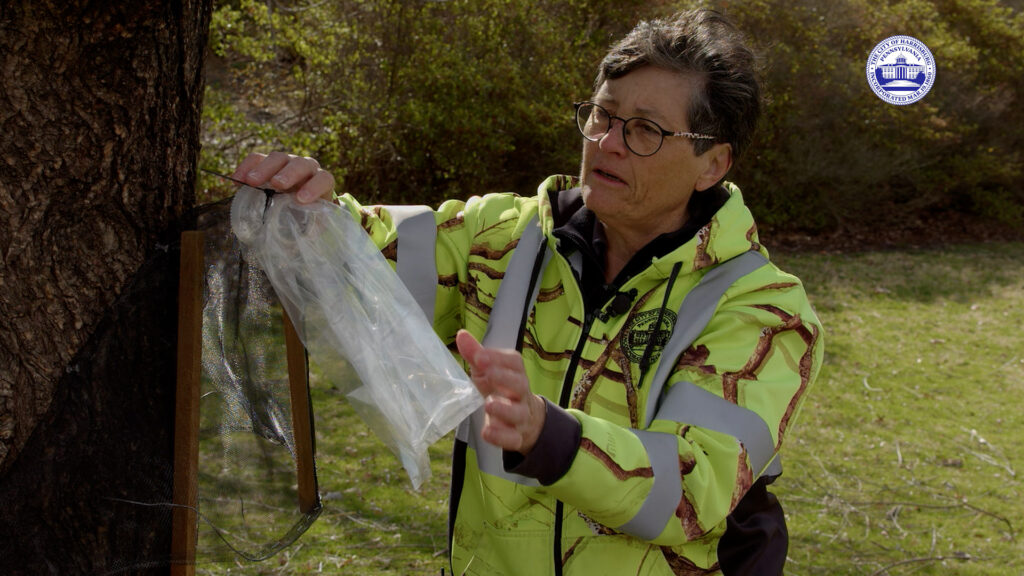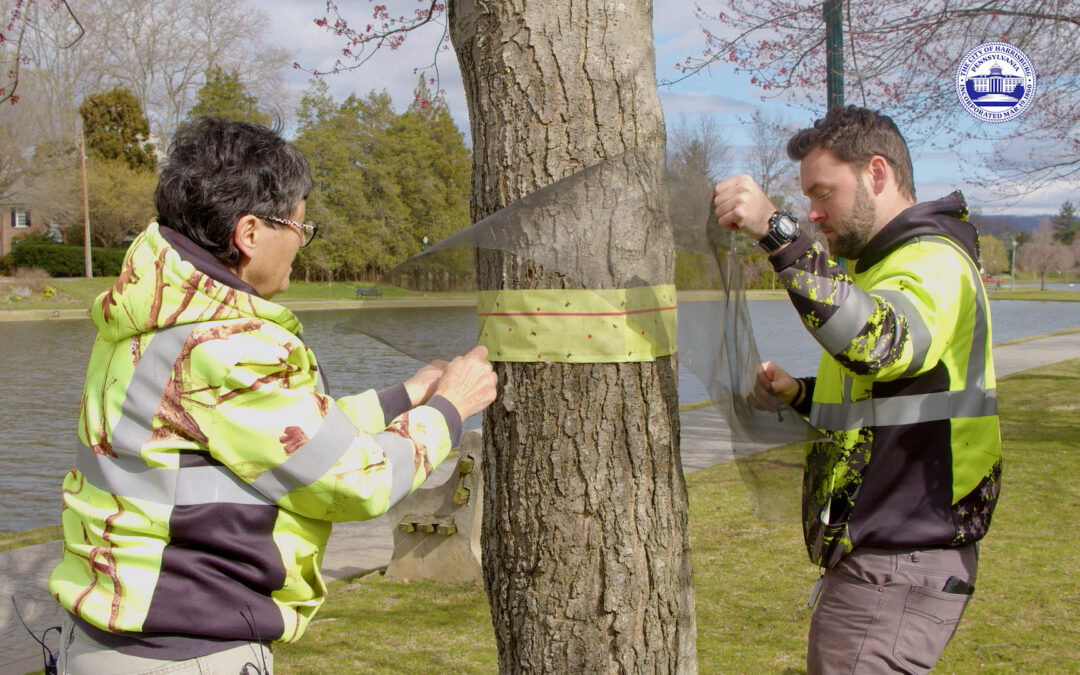FOR IMMEDIATE RELEASE
Contact: Matt Maisel, Director of Communications
[email protected]
(717) 255-7295
HARRISBURG — Spotted lanternflies, the invasive bug which are a threat to numerous plants and trees, are on their way back to annoy you.
“They’re mostly just a pest,” said City of Harrisburg Forester Ellen Roane.
They won’t bite people, but they can cause future damage to your greenery. Roane says spotted lanternflies’ favorite spots to frequent are tree of heaven, red maple, silver maple, walnut, willow, and grapevines. This is where you can step in and help. City residents may not be able to stop the spread of lanternflies, but you can help mitigate the damage.
Roane and city arborist Cody Legge worked this week at Italian Lake, placing traps on trees throughout the park. They plan to do the same at multiple other city parks. Roane says egg masses won’t hatch until the end of April or early May, and because of that, now is the best time to start preparing your own trees.
There are two types of traps people can put on their own trees: sticky wrap – used to catch baby nymphs – and circle traps for more fully grown lanternflies. The sticky wrap tends to be a giant roll of flypaper, cut in half. Roane recommends using two people to wrap the tree. Once that step is completed, use a mesh screen to wrap the tree twice. Pleat the ends, she says, and use thumbtacks or push pins to ensure the netting doesn’t stick to the paper.
“The insects have a tendency to drop out of the tree and then crawl back up the trunk,” Roane says. “As they crawl back up the trunk, they get stuck.”
Circle traps are typically used to trap larger, fully developed lanternflies. They can be purchased on the website GreatLakesIPM.com, or made similar to the sticky band traps in a do-it-yourself format.

More information on circle traps can also be found on the Penn State Extension website.
Once lanternfly season reaches its peak in late-spring, early-summer, both traps will need to be replaced regularly. Roane suggests continuing to stomp or swat any lanternflies you see, whether they are fully grown or in nymph form. People can also scrape egg masses off trees and placing them into hand sanitizer or rubbing alcohol to kill them.

